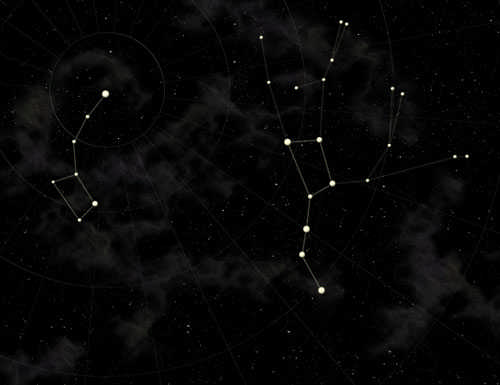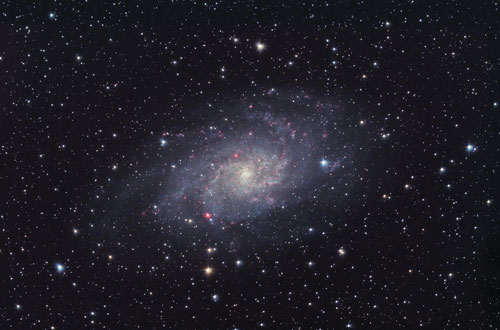Exploring the Gems of Autumn
Autumn’s cool nights remind us winter’s chill is not far off. Along with the cool air, the brilliant stars of the summer triangle descend in the west to be replaced with a rather bland-looking region of sky. But don’t let initial appearances deceive you. Hidden in the fall sky are gems equal to summertime.
The Big Dipper swings low this season, and for parts of the southern United States it actually sets. Cassiopeia the Queen, a group of five bright stars in the shape of a “W” or “M,” reaches its highest point overhead, the same spot the Big Dipper reached 6 months ago.
Autumn’s cool nights remind us winter’s chill is not far off. Along with the cool air, the brilliant stars of the summer triangle descend in the west to be replaced with a rather bland-looking region of sky. But don’t let initial appearances deceive you. Hidden in the fall sky are gems equal to summertime.
The Big Dipper swings low this season, and for parts of the southern United States it actually sets. Cassiopeia the Queen, a group of five bright stars in the shape of a “W” or “M,” reaches its highest point overhead, the same spot the Big Dipper reached 6 months ago.
To the east of Cassiopeia, Perseus the Hero rises high.
The Great Square of Pegasus passes just south of the zenith. Four 2nd- and 3rd-magnitude stars form the square, but few stars can be seen inside of it. If you draw a line between the two stars on the right side of the square and extend it southward, you’ll find 1st-magnitude Fomalhaut in Piscis Austrinus, the Southern Fish. Fomalhaut is the solitary bright star low in the south. Using the eastern side of the square as a pointer to the south brings you to Diphda in the large, faint constellation of Cetus the Whale.
Well to the east of the Square lies the Pleiades star cluster (M45) in Taurus, which reminds us of the forthcoming winter. By late evening in October and early evening in December, Taurus and Orion have both cleared the horizon, and Gemini is rising in the northeast. In concert with the reappearance of winter constellations, the view to the northwest finds summertime’s Cygnus and Lyra about to set.
Autumn is a great transition season, and it's definitely a fine time to experience the subtleties of these constellations.
Richard Talcott is a senior editor at Astronomy magazine. For more stories like this, visit www.Astronomy.com.
Autumn is a great transition season, and it's definitely a fine time to experience the subtleties of these constellations.
Richard Talcott is a senior editor at Astronomy magazine. For more stories like this, visit www.Astronomy.com.
Farther south, between Andromeda and Triangulum, lies M33, a sprawling face-on spiral galaxy best seen with binoculars or a rich-field telescope.
Nestled between these two groups is the wondrous Double Cluster – a fantastic sight with binoculars or a low-power telescope.
Have you ever lost your way in the woods? Chances are you used two things to get around: a map and landmarks. That very same concept can help you find your way around the constellations in any season.
The sky provides us with two major signposts each fall: The Big Dipper – a group of seven bright stars that dominates the constellation Ursa Major (the Great Bear) – and the constellation Orion the Hunter, which both play a key role in finding your way around the sky from late autumn until early spring. With the help of these two signposts, you’re well on your way to impressing your family and cabin guests with your stargazing acumen!
The sky provides us with two major signposts each fall: The Big Dipper – a group of seven bright stars that dominates the constellation Ursa Major (the Great Bear) – and the constellation Orion the Hunter, which both play a key role in finding your way around the sky from late autumn until early spring. With the help of these two signposts, you’re well on your way to impressing your family and cabin guests with your stargazing acumen!
Our view to the south of the Milky Way is a window out of our galaxy that allows us to look at the Local Group of galaxies. Due south of Cassiopeia is the Andromeda Galaxy (M31), a 4th-magnitude smudge of light that passes directly overhead around 9 p.m. in mid-November.

















